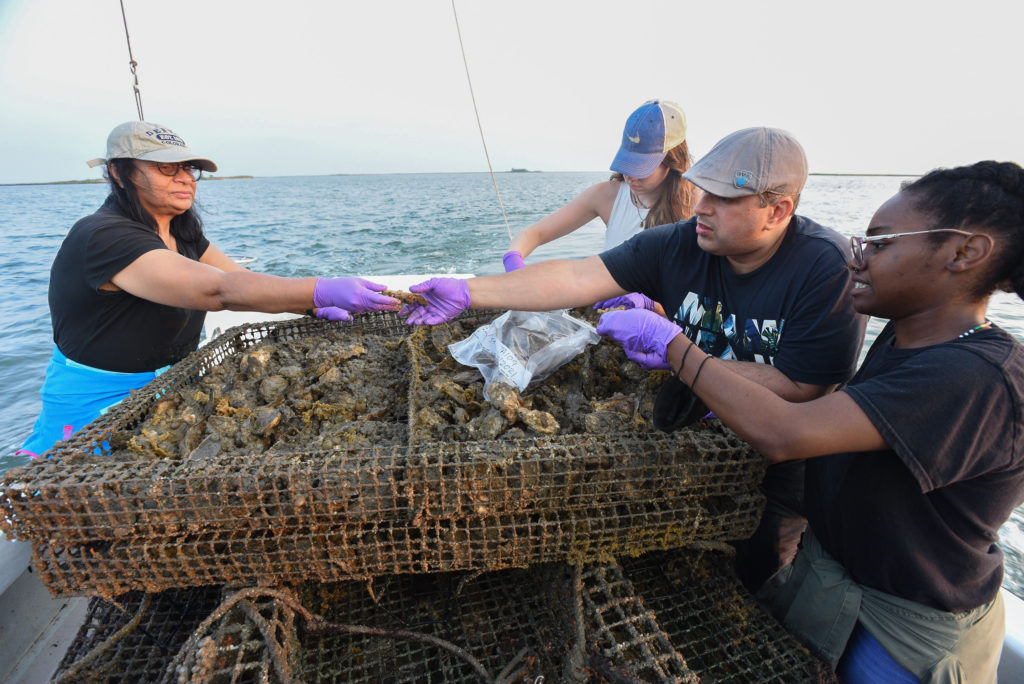
The National Oceanic and Atmospheric Administration (NOAA) Living Marine Resources Cooperative Science Center (LMRCSC) held its 2023 Annual Science Meeting in March. The event put NOAA scientists and LMRCSC students in the same virtual space to encourage collaboration and mentorships.
Samuel Rauch, NOAA Fisheries deputy assistant administrator for regulatory programs, said the Biden-Harris Administration’s recently-released 2023 Ocean Climate Action Plan is a core focus of NOAA Fisheries. The plan outlines actions needed to create a carbon-neutral future, accelerate nature-based solutions and enhance community resilience to ocean change.
Rauch said state control of regulations for communities that rely on the fishing industry end three miles off the coast, and federal regulations take over. While state regulatory agencies can respond quickly to the changing needs of the industry, federal regulations are more difficult to update. As global warming causes changes in the distribution of different marine species, the need for more adaptable federal regulations arises. As a result, Rauch said, NOAA Fisheries is working to craft recommendations for federal regulators for multiple climate change scenarios.
Dr. Cisco Werner, NOAA Fisheries chief science advisor and director of scientific programs, introduced three factors the organization must address in its recommendations:
- Climate Vulnerability Assessments aim to provide decision-makers with information about which species are most vulnerable and why.
- Socio-economic indicators will detail how changes affect coastal communities.
- Projections will need to be more variable than in the past to provide better advice to decision-makers, thereby helping coastal communities become more resilient.
Werner said NOAA Fisheries will need more data collection and a plan to incorporate artificial intelligence and more advanced types of data analysis. “It is a great time to be a graduate student,” he said.
Savannah State University LMRCSC Program Director Dr. Dionne Hoskins-Brown asked if there would be opportunities for students who are trained scientists but interested in investigating the social justice aspect of climate change.
Rauch said NOAA Fisheries’ Social Indicators for Coastal Communities is an area in which future scientists can analyze how changing regulations can affect individual fishermen’s household income as well as entire communities reliant on the industry.
NOAA EPP LMRCSC Fellow Olivia Pares presented research directly in-line with NOAA’s needs. Her NOAA Experiential Research and Training Opportunity (NERTO) project on the distribution of Atlantic blue crabs near Puerto Rico suggested the area could serve as a spawning habitat. Pares said Hurricane Maria drastically affected Puerto Rican fishing villages, and the blue crab could be an option for rejuvenating those economies.
NOAA EPP LMRCSC fellows Leanne Cohn and Joe Day presented NERTO research on protecting rockfish and dolphin populations, respectively. Similarly, NOAA Fisheries Research Biologist Paul Richards made a pitch to students to help with his research on sea turtle populations, which, he said, are likely much lower than scientists once estimated.
NOAA EPP LMRCSC Fellow Tahirah Johnson presented research on an emerging pathogen, Shewanella, in the Chesapeake Bay. Fellow Emily Andrade examined possible antimicrobials in microalgae. Fellow David Garcia Prieto’s NERTO project assessed oxygen-deficient zones in the Eastern Tropical North Pacific. Fellow Amira Layeni is researching how plastic pollution impacts marine life, food safety, and human health. Fellow Noah Tait presented his predictions for how incentivizing fishermen to target a non-native catfish could help pacify the invasive species’ impact on local waterways. Fellow Chryston Best-Otubu used his NERTO to investigate the mortality rates of the Pacific sardine and Northern anchovy.
Acoustician Julianne Wilder, a NOAA affiliate, presented research on how she and her team are acoustically detecting endangered right whales to better protect their species from ships and offshore wind farms. Wilder said with many offshore wind energy sites planned, the demand for real-time monitoring and analysis of what’s happening in the ocean will grow. Wilder said she would need more graduate research assistance next year.
John Walter, NOAA Fisheries deputy director for science and council services, illustrated research opportunities at the NOAA Southeast Fisheries Science Center, where students could work near the Gulf of Mexico, the South Atlantic and the Caribbean. He said emerging research themes include offshore wind and advanced technology, including eDNA and artificial intelligence. He also emphasized the importance of coding skills.
“If you can work with data and analyze it and make sense of it, you’re going to have opportunities,” Walter said.

